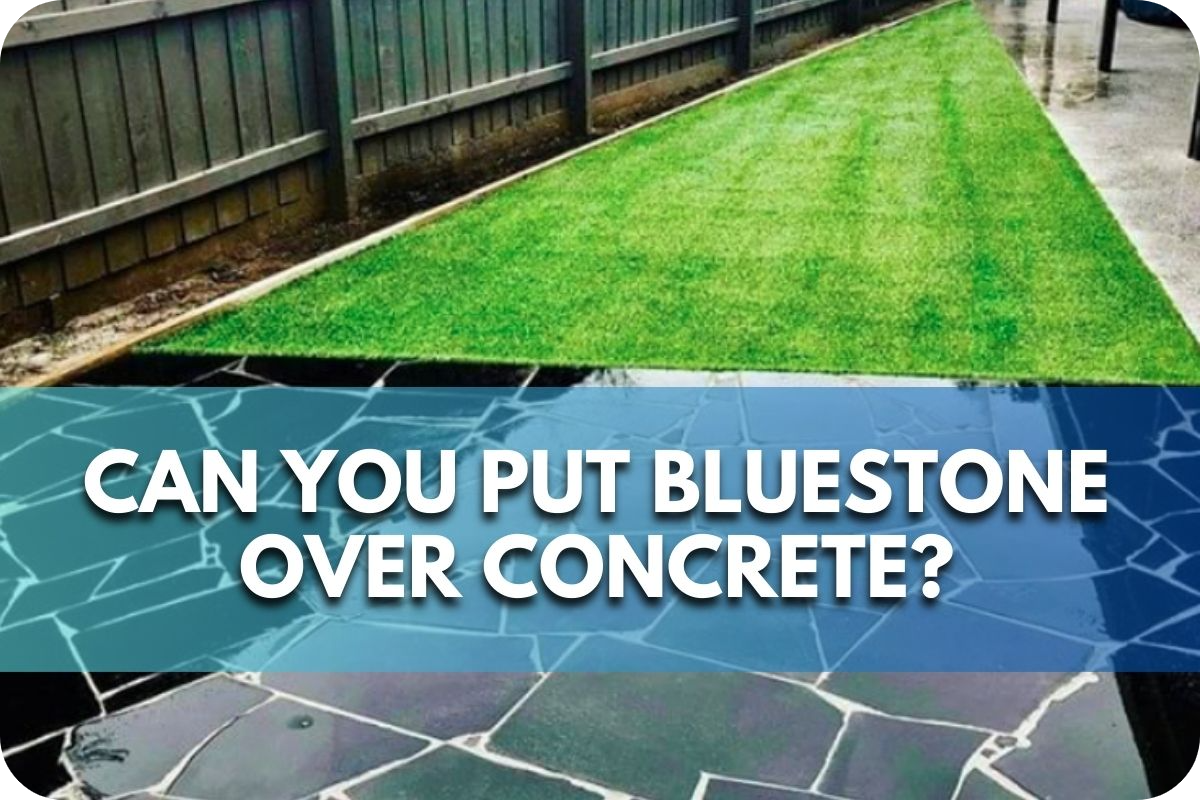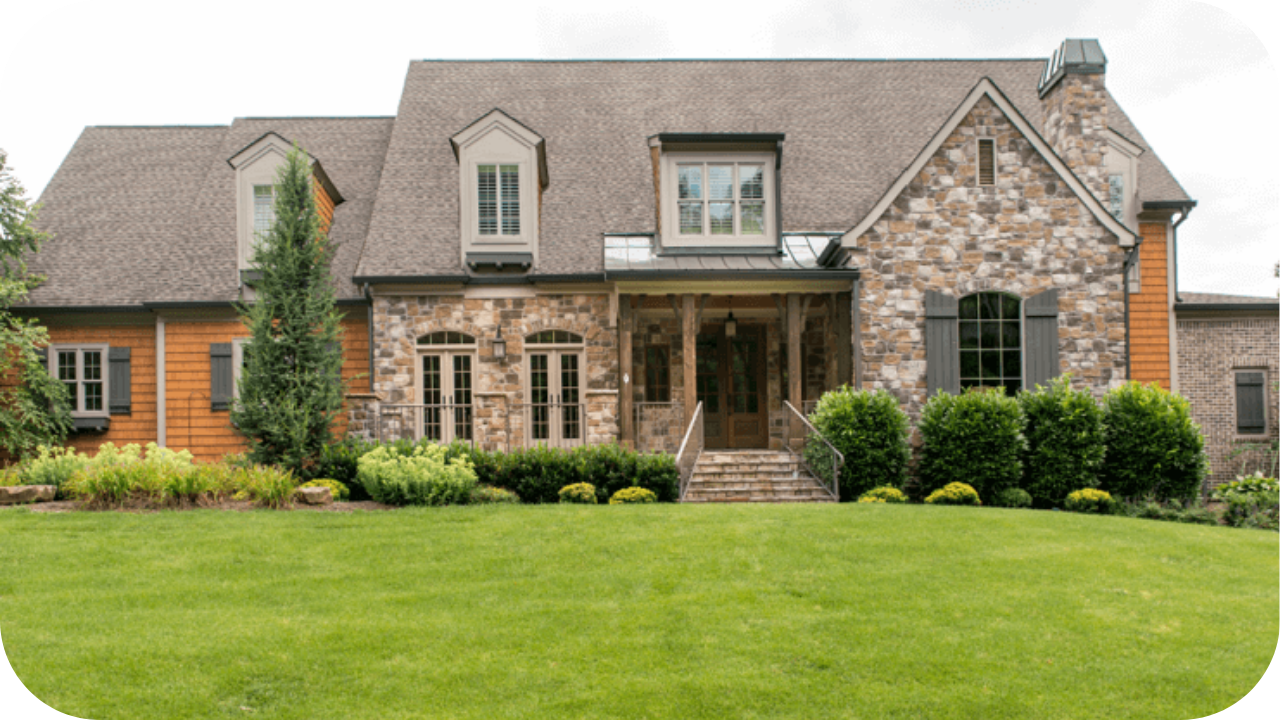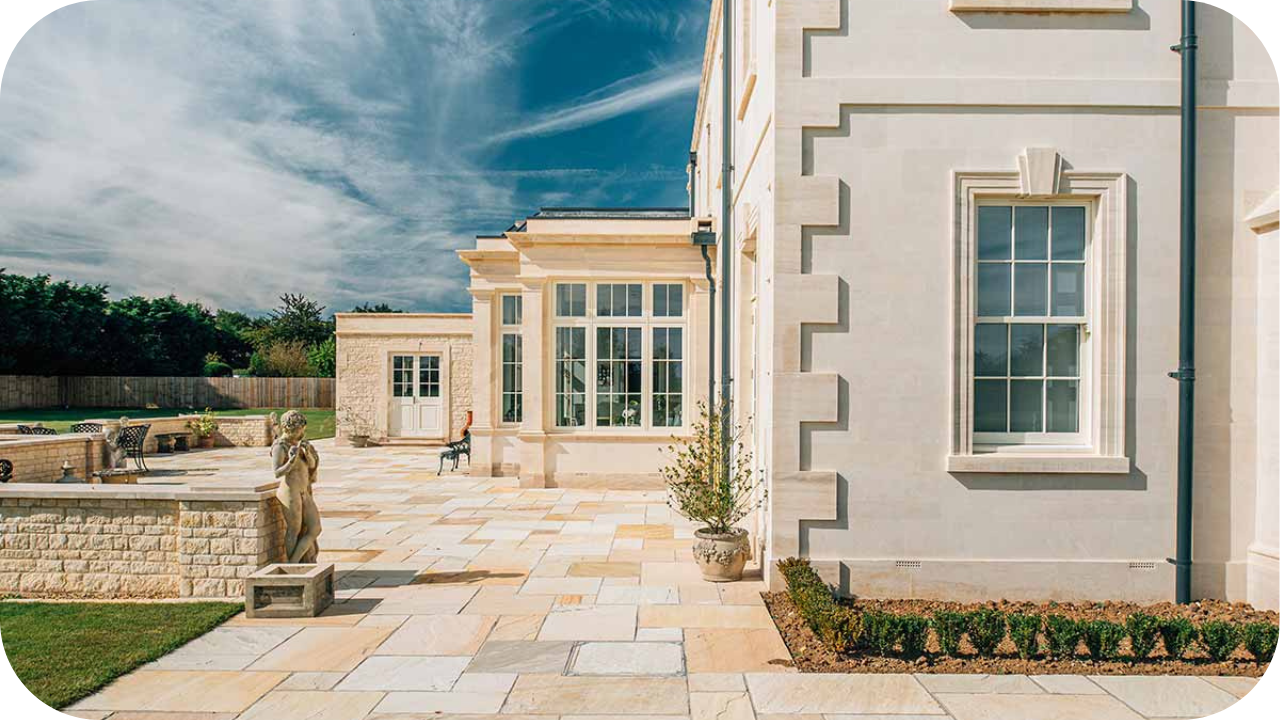
Cracked, discoloured concrete got you down? Dreaming of a beautiful patio upgrade?
Traditional concrete replacement is expensive and time-consuming. You’re left wondering about alternatives to give your outdoor space a facelift.
Laying bluestone over your existing concrete might be the perfect solution! This natural stone adds elegance and durability and could be a more budget-friendly and convenient option compared to a complete tear-out.
Can You Put Bluestone Over Concrete?
Yes, you can put bluestone over concrete. It’s a great way to upgrade an existing concrete surface, but the concrete needs to be in good condition. Ensure no significant cracks or damage and use a mortar bed to secure the bluestone for a long-lasting, beautiful finish.
Benefits of Installing Bluestone Over Concrete
Laying bluestone over your existing concrete patio or walkway offers several compelling advantages:
- Durability: Bluestone is a dense natural stone with incredible resilience. It withstands heavy foot traffic and harsh weather conditions and resists fading for a long-lasting solution.
- Aesthetic Improvement: Bluestone’s blue-grey hues and natural variations enhance outdoor spaces with timeless elegance and a touch of sophistication.
- Cost-Effectiveness: Installing bluestone over concrete often proves more budget-friendly than complete concrete replacement. It eliminates the cost and hassle of demolition and new concrete pouring.
- Increased Slip Resistance: Bluestone’s mildly textured surface provides better traction than smooth concrete, making it safer around pools or wet weather.
- Versatility: Bluestone works beautifully for patios, pool decks, walkways, and other outdoor areas, adding value and visual appeal throughout your property.
Pre-installation Considerations
Before laying bluestone, thoroughly assess and prepare your concrete surface:
Assessing the Concrete Surface
- Structural Integrity: Look for major cracks, crumbling sections, or unevenness. Significant damage might require concrete repair or complete replacement before installing bluestone.
- Slope: Ensure your concrete has a slight slope (about 1/4 inch per foot) for proper drainage to prevent water pooling.
- Cleanliness: Thoroughly clean the concrete, removing dirt, debris, grease, or sealants. Pressure washing is often the most effective method.
Preparation Requirements
- Patching: Fill in minor cracks or uneven areas with a suitable concrete patching compound.
- Levelling: If necessary, use a self-levelling compound to smooth out significant unevenness in the concrete’s surface.
- Optional Etching: If the surface is smooth, consider etching the concrete with a mild acid solution to improve mortar adhesion.
Installation Process
Materials Needed
- Bluestone pavers or tiles
- Mortar (Type S or Type N recommended)
- Notched trowel
- Rubber mallet
- Level
- Mason’s line or chalk line
- Broom
- Sponge
Step-by-Step Installation Guide
- Plan Layout: Determine your pattern and dry-fit the bluestone on the concrete to ensure proper spacing and fit.
- Mix Mortar: Following manufacturer instructions, mix your mortar to a suitable consistency.
- Apply Mortar Bed: Using the notched trowel spread a 1-2 inch layer of mortar over a small section of the concrete.
- Lay Bluestone: Carefully place the first bluestone, gently tapping it with the rubber mallet to set it in place. Use the level to ensure it’s even.
- Set Spacing: Maintain consistent spacing between the pavers using spacers or by eye.
- Repeat: Continue laying bluestone in small sections to prevent the mortar from drying out.
- Clean and Grout: Remove excess mortar. Once fully cured (check mortar instructions), consider grouting the joints for added stability and a finished look.
Potential Challenges and Solutions
Materials Needed
- Bluestone pavers or tiles
- Mortar (Type S or Type N recommended)
- Notched trowel
- Rubber mallet
- Level
- Mason’s line or chalk line
- Broom
- Sponge
Step-by-Step Installation Guide
- Plan Layout: Determine your pattern and dry-fit the bluestone on the concrete to ensure proper spacing and fit.
- Mix Mortar: Following manufacturer instructions, mix your mortar to a suitable consistency.
- Apply Mortar Bed: Using the notched trowel spread a 1-2 inch layer of mortar over a small section of the concrete.
- Lay Bluestone: Carefully place the first bluestone, gently tapping it with the rubber mallet to set it in place. Use the level to ensure it’s even.
- Set Spacing: Maintain consistent spacing between the pavers using spacers or by eye.
- Repeat: Continue laying bluestone in small sections to prevent the mortar from drying out.
- Clean and Grout: Remove excess mortar. Once fully cured (check mortar instructions), consider grouting the joints for added stability and a finished look.
Maintenance Tips
Bluestone is low-maintenance, but some simple care will keep your installation beautiful for years to come:
- Regular Cleaning: Sweep away debris regularly. Periodically wash with water and mild soap. Avoid harsh chemicals or pressure washing, which can damage the stone.
- Stain Treatment: Address spills promptly by blotting them up. For tougher stains, consult a bluestone care guide for suitable cleaner recommendations.
- Sealing: Consider sealing your bluestone to enhance stain resistance and make cleaning easier. Choose a sealer specifically designed for natural stone.
- Winter Protection: In areas with freeze-thaw cycles, apply a penetrating sealer before winter to protect the stone from potential freeze damage.
- Joint Maintenance: Inspect grout periodically for cracks or gaps if you’ve used grout. Repairing these promptly prevents moisture from getting under the pavers.
Design Ideas
Bluestone’s versatility opens up a world of design possibilities for your outdoor space:
- Patterns:
- Classic running bond (staggered brick-like layout) offers timeless appeal.
- Herringbone patterns add visual interest and a touch of sophistication.
- Explore less traditional layouts with random patterns or mixed-size pavers.
- Shapes:
- Square or rectangular pavers create clean, modern lines.
- Irregular flagstone-style pieces offer a more natural, rustic aesthetic.
- Colours: Select from various blue-grey shades, some with subtle brown or tan undertones. Mix colours for a unique, variegated look.
- Borders & Accents: Incorporate contrasting stone or brick borders to define the patio’s edges. Add accents like stepping stones or a central design for added flair.
- Multi-Level Designs: If your space allows, consider creating multi-level patios or walkways connected by bluestone steps for a dynamic, dimensional effect.
Conclusion
Laying bluestone over your existing concrete offers a beautiful and durable solution to revitalise your outdoor spaces.
With proper assessment, preparation, and installation, you’ll transform any area with elegance and long-lasting charm. Are you ready to upgrade your patio, walkway, or pool deck?
More To Explore

Hamptons-Style Homes and the Right Stone to Match
Hamptons-style homes are synonymous with timeless elegance, offering a perfect blend of coastal charm and sophisticated design. With their light, airy feel and use of

Luxury Looks: Styling Stone in Contemporary Homes
Stone has long been associated with luxury, and in contemporary homes, it brings sophistication and timeless charm. From sleek marble countertops to the warmth of


